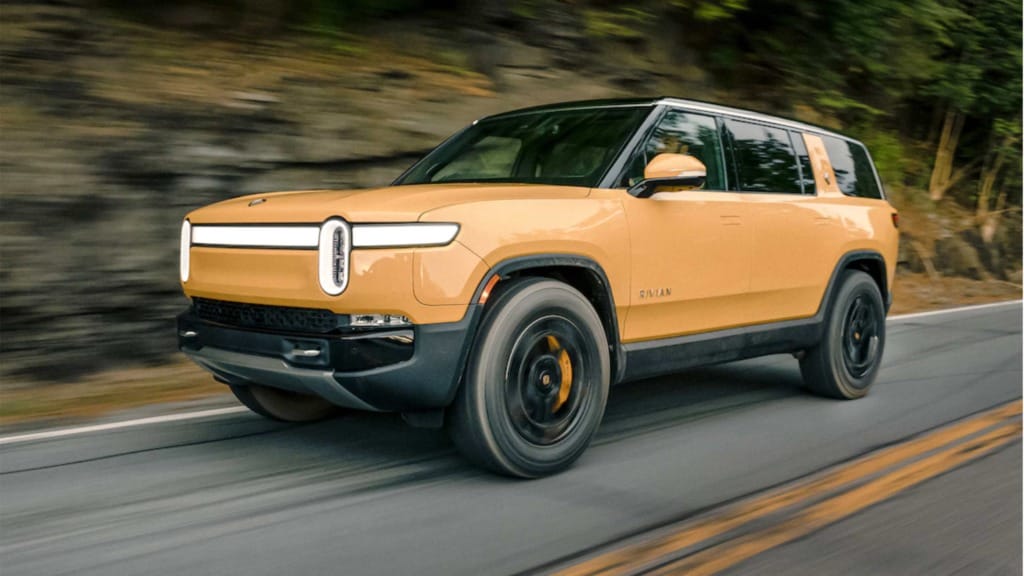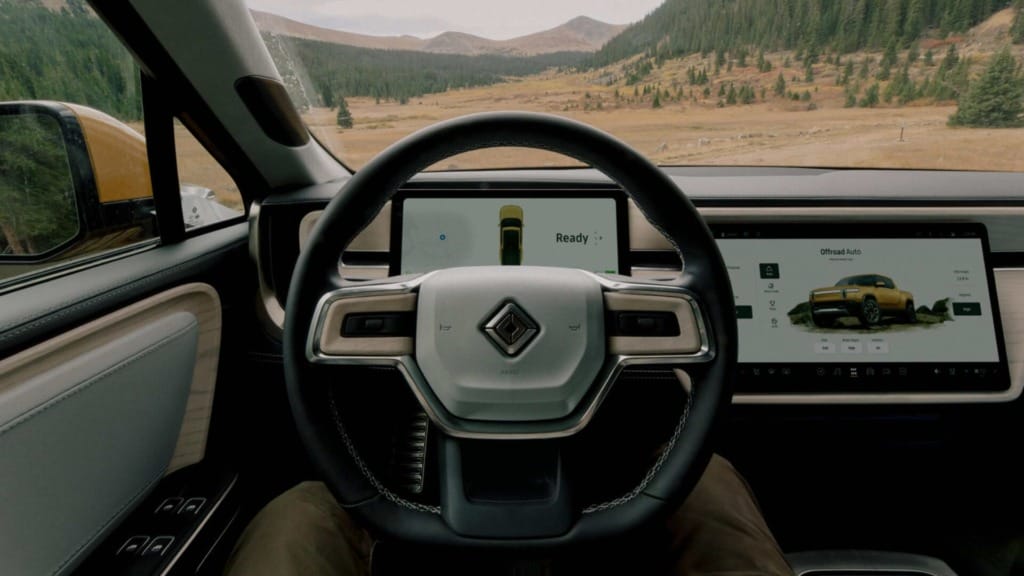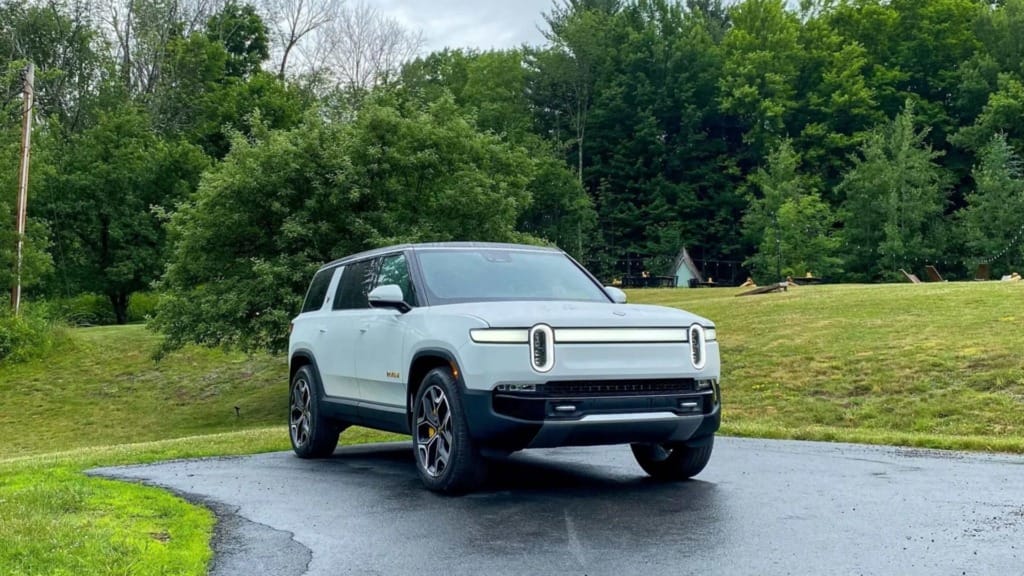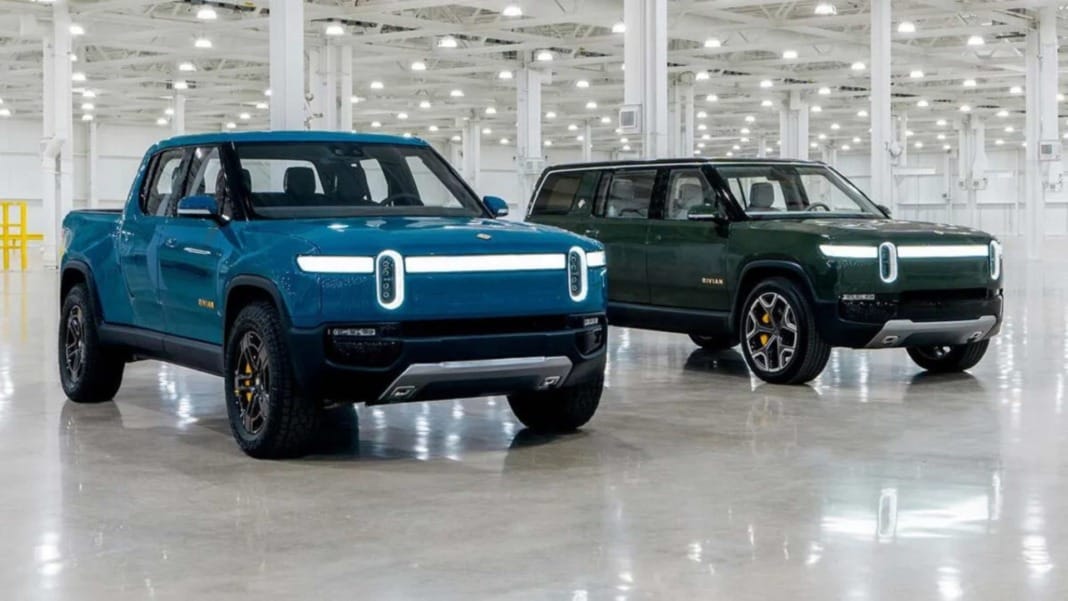On the surface, the second generation of Rivian R1 vehicles may look almost identical to the first generation. You will still see the same rugged yet aerodynamic design, friendly oval headlights, and quirky features like flashlights in the door frames. However, Rivian insists that everything has changed under the hood.
Over the past two and a half years, Rivian’s engineering team has undertaken a massive project, codenamed “Peregrine,” to fundamentally change the DNA of the R1T truck and R1S SUV. Although these electric vehicles (EVs) were only launched in 2021, Rivian needed to innovate quickly. The demand for plug-in cars has been inconsistent, and with a limited two-model lineup, Rivian had to find new ways to attract customers.
“We are completely reengineering the guts of the vehicle,” Wassym Bensaid, Rivian’s head of software, told The Verge. “And that opens up lots of possibilities.”
Rivian is replacing its old domain-based architecture with a new “zonal” system, similar to what Tesla uses. This change means fewer electronic control units (ECUs), less wiring, and, most importantly, lower production costs. Reducing production costs is crucial for Rivian, as the company lost US$1.4 billion in the first quarter alone and needs to cut expenses to survive.
The vehicles also receive major software upgrades, including stunning new visuals powered by Epic’s Unreal Engine that look more like paintings than computer-generated imagery. Redesigned motors enable a performance boost for both dual- and quad-motor variants. Additionally, Rivian is adding functional new hardware, such as a thermal heat pump for better battery maintenance, new aerodynamic tyres, and an improved driver-assist system.
Comprehensive reimagining
In a series of interviews last month, Rivian’s top executives emphasised that this is not a typical mid-cycle refresh commonly seen in the auto industry. Instead, this overhaul represents a blank-slate, top-to-bottom reimagining of the company’s flagship EVs, aimed at streamlining processes for upcoming models like the R2 and R3 vehicles.
“Essentially, everything beneath the surface has changed,” Rivian CEO RJ Scaringe said in a recent interview.

Some updates, like the aggressive new quad-motor R1T, will grab attention. However, Rivian’s switch from domain to zonal network architecture is arguably the most significant change. The first-gen R1 platform relied on a domain architecture with over a dozen ECUs controlling various systems, from airbags to braking. Switching to a zonal architecture has allowed Rivian to cut down on wiring significantly, removing over 1.6 miles (2.6 km) of it and consolidating the ECUs.
According to Scaringe, this new zonal architecture will lead to smoother over-the-air software updates and “thousands” in cost savings per vehicle. Most importantly, customers will notice significant software performance and enhancement improvements, which should help boost sales.
For its first-generation quad-motor vehicles, Rivian sourced its drive units from German auto supplier Bosch. However, the company has started producing its own Enduro drive units for dual-motor vehicles, aiming to control costs better. These in-house parts are used for an all-new quad-motor R1 platform, delivering impressive performance improvements.
The new quad-motor R1T and R1S will generate 1,025 horsepower and 1,198 lb-ft of torque, up from 835 hp and 908 lb-ft in the first-gen quad-motor R1s. They will accelerate from 0 to 60 mph in just 2.5 seconds and complete a quarter-mile in 10.5 seconds, faster than many top supercars.
Rivian has redesigned its Large and Max battery packs for those more concerned with everyday matters to provide a better range. The second-gen R1 vehicles will get up to 420 miles in the EPA-estimated range, slightly increasing from the previous maximum range of 410 miles. New 22-inch aero wheels will also help reduce drag and maximise range.
Rivian is also introducing a lithium iron phosphate (LFP) battery option with an estimated range of 270 miles. LFP batteries are cheaper to manufacture and have a longer life cycle, making them more durable. The new battery pack also features a heat pump for improved thermal management, which is more efficient than the previous resistive heating system.
These changes are paving the way for Rivian’s R2 vehicle, which will be smaller and more affordable. The R2 will incorporate many innovations from the R1 update, including high-pressure die castings and heat pumps, to reduce costs and improve efficiency.
Advanced driver-assist system
Rivian’s Driver Plus system has many fans, but the company has not been seen as a leader in autonomous driving. That might change with the second-generation R1 computing system, which is getting a significant upgrade. Rivian is installing Nvidia’s AI chips in its vehicles for the first time, improving processing speeds and enabling hands-free driving.

The number of sensors in the driver-assist system remains similar, but the fidelity of the cameras has improved significantly. Rivian now uses surround-view cameras with three times the resolution, better low-light performance, and improved colour quality. The company is also replacing its previous-generation radars with imaging radars for better accuracy.
Rivian’s Driver Plus system will now offer enhanced blind-spot detection, automatic lane changing, and hands-free driving by the end of the year. These improvements give Rivian a platform for much better autonomy capabilities in the future.
Rivian’s infotainment system, powered by Epic Games’ Unreal Engine, is getting a major upgrade. A new illustration-based redesign gives the user interface an artistic feel. The extra computing power and memory allow Rivian to make the most of the Unreal Engine in the vehicle.
Digital keys are now available, allowing Rivian owners to lock, unlock, and start their vehicles using their phones or smartwatches. The system is compatible with iPhones, Apple Watches, and select Google Pixel devices.
Although Rivian does not support phone projection, the company is adding new features to compensate. Partnerships with YouTube and Google Cast allow owners to watch videos on the central display, and Rivian is working with Apple to integrate Apple Music into the R1’s software. The inclusion of Dolby Atmos will make listening to your favourite tracks more immersive.
Pricing and future outlook
The prices for the second-generation R1 vehicles remain unchanged, with the R1S starting at US$75,900 and the R1T starting at US$69,900. Deliveries begin immediately. Although Rivian is saving costs through improved manufacturing techniques, these savings still need to be passed down to customers.
“Our long-term success as a business requires us to be profitable,” Scaringe said. “We have focused on our path to healthy, positive gross margins.”

Rivian expects to earn more revenue from each vehicle sale and anticipates modest gross profits by the end of 2024. However, profitability in the traditional sense is still a challenge.
The new R1 vehicles come when customers become more selective and price-sensitive about EVs. While Rivian’s sales are up, its losses are also increasing. Other automakers are laying off employees, cancelling factory plans, or delaying plug-in models, creating uncertainty and opportunity.
Rivian is counting on the R2, a smaller, more affordable vehicle starting at US$45,000, to achieve stability. The R1 update sets the stage for the R2’s production kickoff in 2026.
“We want to make this the best version of the vehicle it can be,” Scaringe said. “It is our flagship, the R1T and R1S. Thus, they must continue to be leaders regarding their attributes and features.”
While some see Rivian’s focus on battery-electric vehicles as a drawback, Scaringe views it as an advantage. Despite the popularity of hybrids, he believes that pure-play electric vehicle manufacturers like Rivian are essential.
“While I think it is bad for the world that there is going to be less choice and many automakers are pulling back on electrification, it creates a greater need for mission-oriented electric vehicle manufacturers to exist,” Scaringe said.





